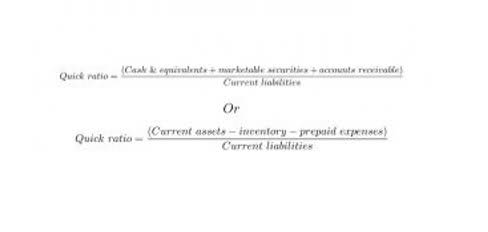
Cash accounting is an accounting method in which payment receipts are recorded in the period they are received, and expenses are recorded in the period in which they are paid. In other https://www.bookstime.com/articles/debit-memo words, revenues and expenses are recorded when cash is received and paid, respectively. Acme’s cash flow statement indicates that net cash flow for the financial period was $320,000.
Ask Any Financial Question
- These figures are generally reported annually on a company’s 10-K report to shareholders.
- It is part of a public company’s financial reporting requirements since 1987.
- Streamline your construction business with informed financial strategies.
- Study a statement to determine where changes might be made to better utilize cash, run a business more efficiently, and grow it more effectively.
- The cash flow statement simply shows the inflows and outflows of cash from your business over a specific period of time, usually a month.
- This may involve implementing lean manufacturing practices, improving supply chain management, and minimizing downtime in production.
- Without context, a comparative point, knowledge of its previous cash balance, and an understanding of industry operating demands, knowing how much cash on hand a company has yields limited value.
A cash flow statement is a regular financial statement telling you how much cash you have on hand for a specific period. In the above example, the business has net cash of $50,049 from its operating activities and $11,821 from its investing activities. It has a net outflow of cash, which amounts to $7,648 from its financing activities.
Cash Flows From Operations (CFO)
- Even profitable companies can fail to adequately manage their cash flow, which is why a cash flow statement is a critical tool for analysts and investors.
- The income statement and the cash flow statement are two out of the three components of a financial statement, the other being the balance sheet.
- Cash flow from assets focuses only on cash generated by operations, excluding external financing activities, such as selling stocks.
- While many companies use net income, others may use operating profit/EBIT or earnings before tax.
- However, when interest is paid to bondholders, the company is reducing its cash.
A cash flow statement is a valuable measure of strength, profitability, and the long-term future outlook of a company. The CFS can help determine whether a company has enough liquidity or cash to pay its expenses. A company can use a CFS to predict future cash flow, which helps with budgeting matters. The direct method adds up all of the cash payments and receipts, including cash paid to suppliers, cash receipts from customers, and cash paid out in salaries. This method of CFS is easier for very small businesses that use the cash basis accounting method. Another useful aspect of the cash flow statement is to compare operating cash flow to net income.
Do you already work with a financial advisor?
Additional paid-in capital or capital surplus represents the amount shareholders have invested in excess of the common or preferred stock accounts, which are based on par value rather than market price. Shareholder equity is not directly related to a company’s market capitalization. The latter is based on the current price of a stock, while paid-in capital is the sum of the equity that has been purchased at any price.
Which of these is most important for your financial advisor to have?

Let’s say Acme Company produces a cash flow statement showing the cash flows below. If your cash flow analysis shows that you are about to be low on cash and not able to make your payments, you can adapt by obtaining financing, cutting costs, or trying to increase income. In its third quarter 2024 condensed consolidated balance sheet, Apple Inc.(AAPL) reported $32.7 billion of cash and cash equivalents as of March 30, 2024. On Sept. 30, 2023, Apple Inc. had reported $30.0 billion of cash and cash equivalents. A company may report prepaid assets as part of its current asset section.
Where do cash flow statements come from?
Free cash flow is left over after a company pays for its operating expenses and CapEx. It captures all the positive qualities of internally produced cash from a company’s operations and monitors the use of cash for capital expenditures. The three types of cash flow are cash flows from operations, cash flows from investing, and cash flows from financing. Cash flow analysis is the process of examining the amount of cash that flows into a company and the amount of cash that flows out to determine the net amount of cash that is held.

With the indirect method, cash flow is calculated by adjusting net income by adding or subtracting differences resulting from non-cash transactions. Non-cash items show up in the changes to a company’s assets and liabilities on the balance sheet from one period to the next. Cash flow is the net cash and cash equivalents transferred in and out of a company. A company creates value for shareholders through its ability to generate positive cash flows and maximize long-term free cash flow (FCF).

- Changes in cash from investing are usually considered cash-out items because cash is used to buy new equipment, buildings, or short-term assets such as marketable securities.
- Before this model can be created, we first need to have the income statement and balance sheet built in Excel, since that data will ultimately drive the cash flow statement calculations.
- The issuance of debt is a cash inflow, because a company finds investors willing to act as lenders.
- Preferred stock is assigned an arbitrary par value (as is common stock, in some cases) that has no bearing on the market value of the shares.
- Cash is obviously direct ownership of money, while cash equivalents represent ownership of a financial instrument that often ties to a claim to cash.
- This information is helpful so that management can make decisions on where to cut costs.
- For this reason, a balance alone may not paint the full picture of a company’s financial health.
Last, a balance sheet is subject to several areas of professional judgement that may materially impact the report. For example, accounts receivable must be continually assessed for impairment and adjusted to which of the following are components of cash flow from assets? reflect potential uncollectible accounts. Without knowing which receivables a company is likely to actually receive, a company must make estimates and reflect their best guess as part of the balance sheet.
Determine the Reporting Period
- Therefore, it should always be used in unison with the income statement and balance sheet to get a complete financial overview of the company.
- When you tap your line of credit, get a loan, or bring on a new investor, you receive cash in your accounts.
- Next, our company’s long-term debt balance was assumed to be $80m, which is decreased by the mandatory debt amortization of $5m.
- However, because of accrual accounting, net income doesn’t necessarily mean that all receivables were collected from customers.
- Greg didn’t invest any additional money in the business, take out a new loan, or make cash payments towards any existing debt during this accounting period, so there are no cash flows from financing activities.
Financing activities generally include the cash effects (inflows and outflows) of transactions and other events involving creditors and owners. Cash inflows from financing activities include cash received from issuing capital stock and bonds, mortgages, and notes, and from other short- or long-term borrowing. Cash outflows for financing activities include payments of cash dividends or other distributions to owners (including cash paid to purchase treasury stock) and repayments of amounts borrowed. Payment of interest is not included because interest expense appears on the income statement and is, therefore, included in operating activities. Cash payments to settle accounts payable, wages payable, and income taxes payable are not financing activities. A cash flow statement shows the exact amount of a company’s cash inflows and outflows, either monthly, quarterly, or annually.


